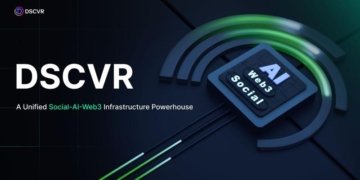Skill Development Institute Business Plan & Project Report Overview
IMARC Group’s “Skill Development Institute Business Plan and Project Report 2025” offers a comprehensive framework for establishing a successful skill development institute business. The critical areas, including market trends, investment opportunities, revenue models, and financial forecasts, are discussed in this in-depth report and are therefore useful resources to entrepreneurs, consultants and investors. Whether evaluating the viability of a new venture or streamlining an existing one, the report gives an in-depth analysis of all the ingredients that make it successful, starting with business formation and profitability over time.
What is a Skill Development Institute Business?
A Skill Development Institute is a specialized educational establishment designed to deliver comprehensive vocational training and professional upskilling programs. These institutes emphasize industry-relevant curriculum development, hands-on practical training, certification programs, apprenticeship coordination, career counseling services, placement assistance, and continuous learning pathways, catering to students, job seekers, working professionals, and corporate clients seeking workforce development solutions.
They offer a variety of services including technical skills training, soft skills development, digital literacy programs, industry-specific vocational courses, professional certification preparation, entrepreneurship development, on-the-job training coordination, competency assessments, career guidance counseling, and customized corporate training solutions for individuals and organizations committed to enhancing employability and professional growth.
The category encompasses vocational training centers, professional development institutes, technical education facilities, and integrated workforce development centers, each prioritizing curriculum relevance, industry partnerships, instructor quality, practical learning experiences, assessment rigor, placement support, continuous curriculum updates, and measurable skill acquisition outcomes.
To achieve these goals, Skill Development Institutes integrate state-of-the-art training laboratories, industry-standard equipment and tools, learning management systems, virtual training platforms, assessment and certification software, career counseling tools, placement management systems, and performance tracking analytics.
Depending on their positioning, these establishments may operate as specialized technical training centers, multi-sector vocational institutes, corporate training providers, or comprehensive workforce development academies, delivering complete educational experiences tailored to diverse skill levels, industry sectors, career stages, and employment objectives.
Request for a Sample Report: https://www.imarcgroup.com/skill-development-institute-business-plan-feasibility-report/requestsample
Skill Development Institute Business Market Trends and Growth Drivers
The trends and drivers of a Skill Development Institute business are shaped by the widening skills gap between educational outcomes and industry requirements, rapid technological advancement requiring continuous upskilling, and growing youth unemployment despite labor market demands. These factors, combined with increasing government emphasis on vocational education and skill development initiatives, are fuelling demand for quality training programs. Contributing to this shift is the expanding gig economy requiring diverse skill sets, digital transformation across industries creating new job categories, automation displacing traditional roles while creating technical opportunities, and employer preference for job-ready candidates, along with individual recognition of lifelong learning necessity, career transition support needs, and entrepreneurship enablement within the evolving workforce ecosystem.
To meet these demands, operators are investing in advanced training infrastructure, industry-aligned curriculum development, experienced instructor recruitment, technology-enabled learning platforms, and compliance with national skill qualification frameworks and accreditation standards. These investments not only enhance learning outcomes and employability but also strengthen business credibility by aligning with broader trends in workforce development and economic productivity.
Revenue diversification is another critical factor in building financial resilience. In addition to direct course fees and training program revenues, income streams may include government-sponsored skill development schemes, corporate training contracts, apprenticeship program management, assessment and certification services, placement service fees, consultancy for curriculum development, equipment and facility rental, and online course subscriptions.
Location and industry connectivity play a vital role in success. Institutes positioned in areas with concentrations of target industries, educational institutions, employment hubs, and good transportation access benefit from steady student enrollment and employer engagement. At the same time, well-equipped training facilities, qualified instructors with industry experience, and strong relationships with employers, industry associations, and government skill development agencies ensure training quality and placement success.
However, the business also faces risk factors, such as rapidly changing industry skill requirements necessitating frequent curriculum updates, intense competition from established training institutes and emerging online platforms, significant capital requirements for specialized equipment and infrastructure, and dependency on government policies, funding schemes, and accreditation processes that may evolve.
A successful Skill Development Institute business model requires careful financial planning-including capital investment in training facilities, specialized equipment, and technology infrastructure, development of industry-relevant curricula, and recruitment of qualified instructors and support staff. It also demands strong industry partnerships for practical training opportunities, updated knowledge of labor market trends, supported by effective marketing strategies to build brand reputation, attract diverse student segments, and establish long-term relationships with employers, government agencies, educational institutions, and community organizations. By delivering high-quality training, measurable skill outcomes, and strong placement support, these businesses can bridge the skills gap while empowering individuals to achieve career success and economic independence.
Report Coverage
The Skill Development Institute Business Plan and Project Report includes the following areas of focus:
• Business Model & Operations Plan
• Technical Feasibility
• Financial Feasibility
• Market Analysis
• Marketing & Sales Strategy
• Risk Assessment & Mitigation
• Licensing & Certification Requirements
The comprehensive nature of this report ensures that all aspects of the business are covered, from market trends and risk mitigation to regulatory requirements and student-focused enrollment strategies.
Key Elements of Skill Development Institute Business Setup
Business Model & Operations Plan
A solid business model is crucial to a successful venture. The report covers:
• Service Overview: A breakdown of vocational training programs, technical skills courses, soft skills development, certification preparation, career counseling services, placement assistance, corporate training solutions, and apprenticeship coordination services offered
• Service Workflow: How each student enrollment, training delivery, competency assessment, certification process, placement support, employer engagement, and feedback collection process is managed
• Revenue Model: An exploration of the mechanisms driving revenue across multiple training programs and support services
• SOPs & Service Standards: Guidelines for consistent training quality, assessment standards, instructor performance, and student satisfaction
This section ensures that all operational and educational aspects are clearly defined, making it easier to scale and maintain service quality.
Buy Report Now: https://www.imarcgroup.com/checkout?id=37670&method=1911
Technical Feasibility
Setting up a successful business requires proper educational infrastructure and training facility planning. The report includes:
• Location Selection Criteria: Key factors to consider when choosing institute locations and target student markets
• Space & Costs: Estimations for required classroom space, training laboratories, workshop areas, administrative offices, and associated costs
• Equipment & Systems: Identifying essential training equipment, specialized tools and machinery, learning management systems, assessment platforms, and administrative technology
• Facility & Laboratory Setup: Guidelines for creating effective training environments and industry-standard practical learning spaces
• Utility Requirements & Costs: Understanding the power infrastructure, internet connectivity, and utilities necessary to run skill development operations
• Human Resources & Wages: Estimating staffing needs, roles, and compensation for instructors, technical trainers, career counselors, placement officers, administrative staff, and support personnel
This section provides practical, actionable insights into the educational infrastructure needed for setting up your business, ensuring training excellence and student success.
Financial Feasibility
The Skill Development Institute Business Plan and Project Report provides a detailed analysis of the financial landscape, including:
• Capital Investments & Operating Costs: Breakdown of initial and ongoing investments
• Revenue & Expenditure Projections: Projected income and cost estimates for the first five years
• Profit & Loss Analysis: A clear picture of expected financial outcomes
• Taxation & Depreciation: Understanding tax obligations and equipment depreciation
• ROI, NPV & Sensitivity Analysis: Comprehensive financial evaluations to assess profitability
This in-depth financial analysis supports effective decision-making and helps secure funding, making it an essential tool for evaluating the business’s potential.
Market Insights & Strategy
Market Analysis
A deep dive into the skill development institute market, including:
• Industry Trends & Segmentation: Identifying emerging trends and key market segments across vocational training centers, technical institutes, professional development academies, and corporate training providers
• Regional Demand & Cost Structure: Regional variations in skill development needs and cost factors affecting institute operations
• Competitive Landscape: An analysis of the competitive environment including established vocational training institutes, government skill development centers, private training providers, and online learning platforms
Profiles of Key Players
The report provides detailed profiles of leading players in the industry, offering a valuable benchmark for new businesses. It highlights their program offerings, training methodologies, industry partnerships, and market positioning, helping you identify strategic opportunities and areas for differentiation.
Capital & Operational Expenditure Breakdown
The report includes a comprehensive breakdown of both capital and operational costs, helping you plan for financial success. The detailed estimates for facility development, equipment, and operating costs ensure you’re well-prepared for both initial investments and ongoing expenses.
• Capital Expenditure (CapEx): Focused on facility construction or renovation, classroom and laboratory setup, specialized training equipment and tools, learning management systems, administrative infrastructure, and furniture and fixtures
• Operational Expenditure (OpEx): Covers ongoing costs like instructor salaries, administrative staff wages, equipment maintenance and consumables, utilities, marketing and student recruitment expenses, accreditation and certification fees, and facility upkeep
Financial projections ensure you’re prepared for cost fluctuations, including adjustments for equipment upgrades, curriculum development costs, instructor training investments, and competitive market pressures over time.
Profitability Projections
The report outlines a detailed profitability analysis over the first five years of operations, including projections for:
• Total revenue from training programs, corporate contracts, government schemes, and placement services, expenditure breakdown, gross profit, and net profit
• Profit margins for each revenue stream and year of operation
• Revenue per student projections and enrollment growth estimates
These projections offer a clear picture of the expected financial performance and profitability of the business, allowing for better planning and informed decision-making.
Request For Customization: https://www.imarcgroup.com/checkout?id=37670&method=1911
Our expertise includes:
• Market Entry and Expansion Strategy
• Feasibility Studies and Business Planning
• Company Incorporation and Training Institute Setup Support
• Regulatory and Licensing Navigation
• Competitive Analysis and Benchmarking
• Industry Partnership Development
• Branding, Marketing, and Student-Focused Enrollment Strategy
About Us
IMARC Group is a leading global market research and management consulting firm. We specialize in helping organizations identify opportunities, mitigate risks, and create impactful business strategies.
Contact Us:
IMARC Group
134 N 4th St. Brooklyn, NY 11249, USA
Email: sales@imarcgroup.com
Tel No:(D) +91 120 433 0800
United States: (+1-201971-6302)
This release was published on openPR.
















